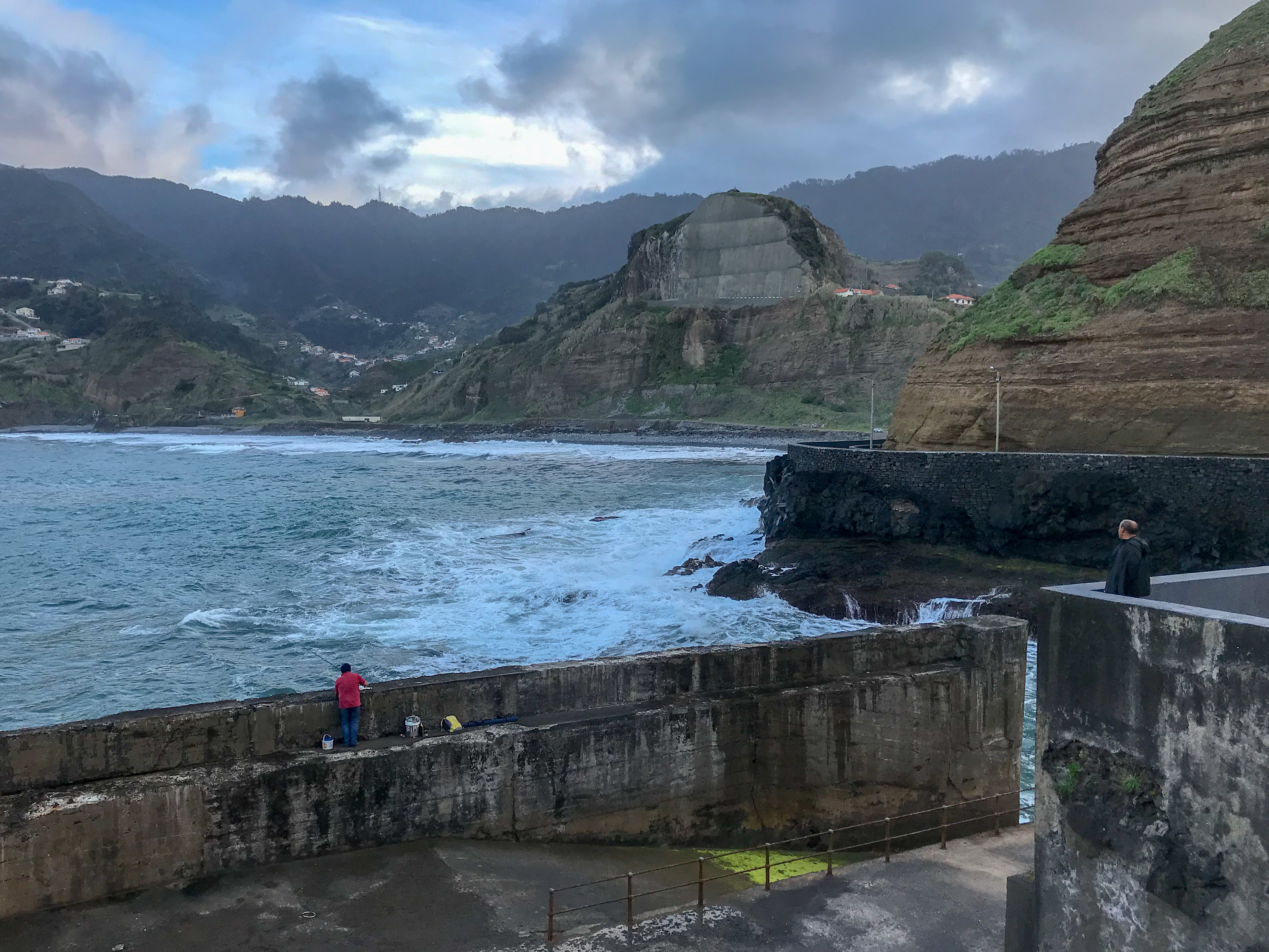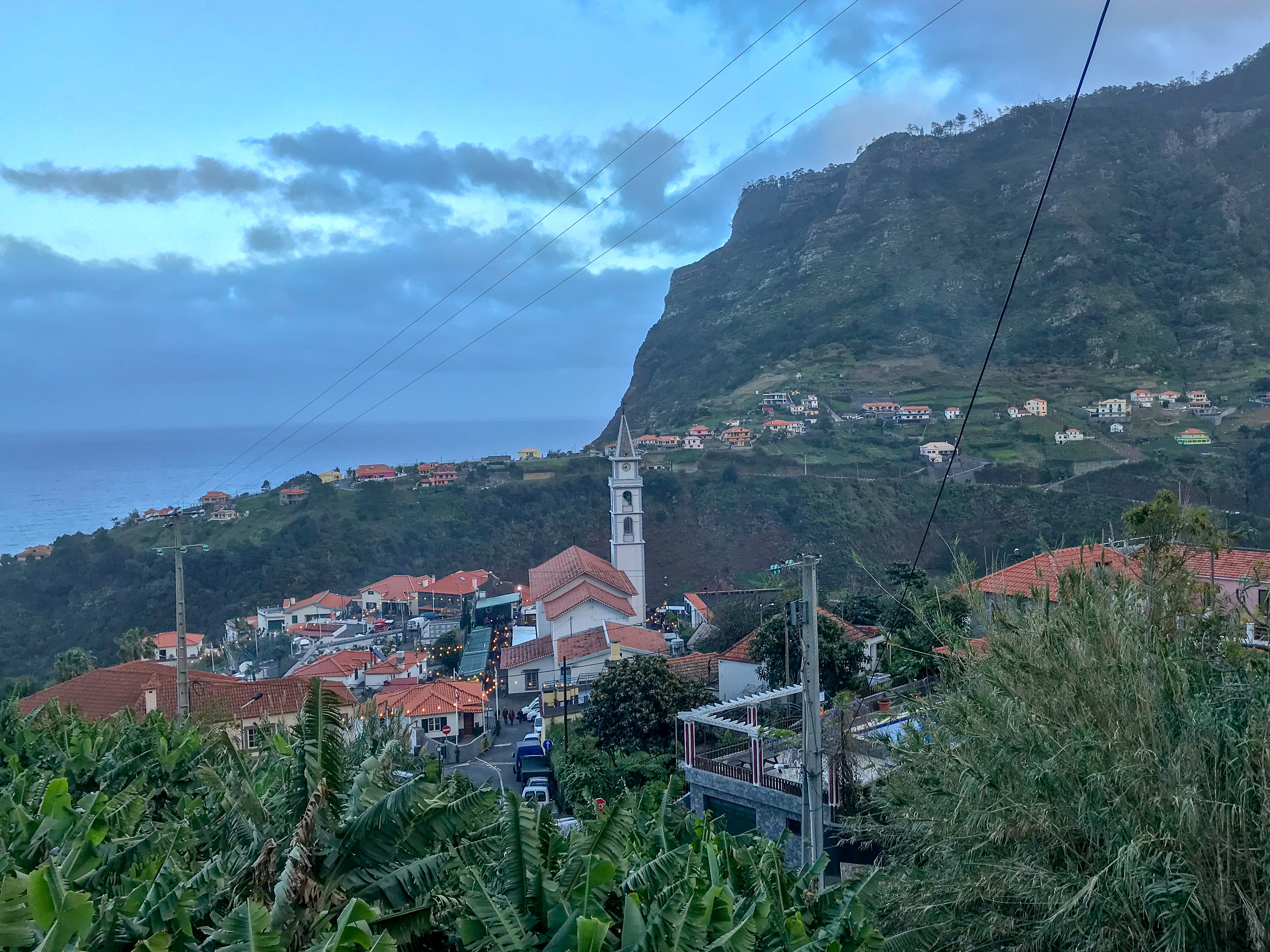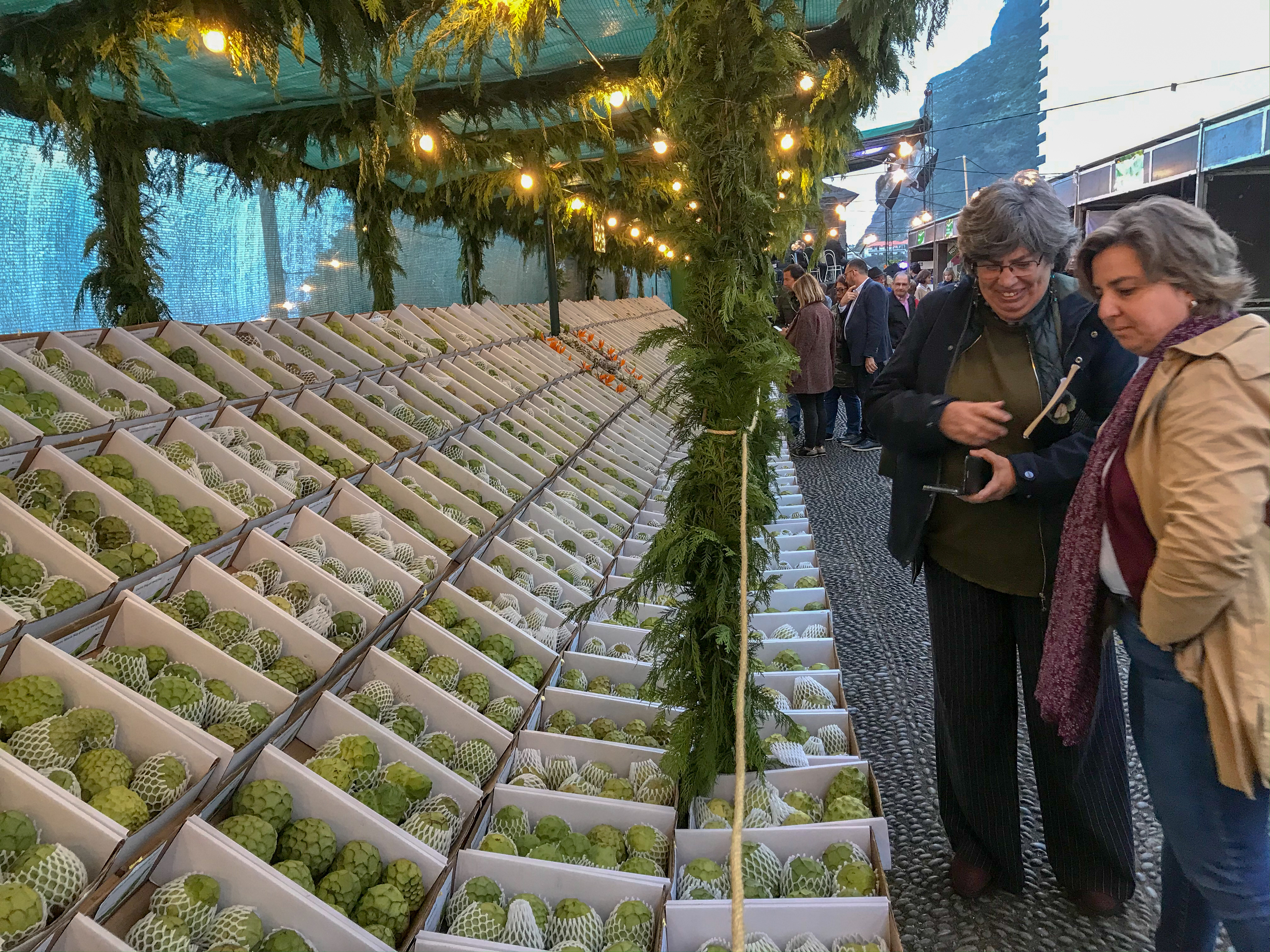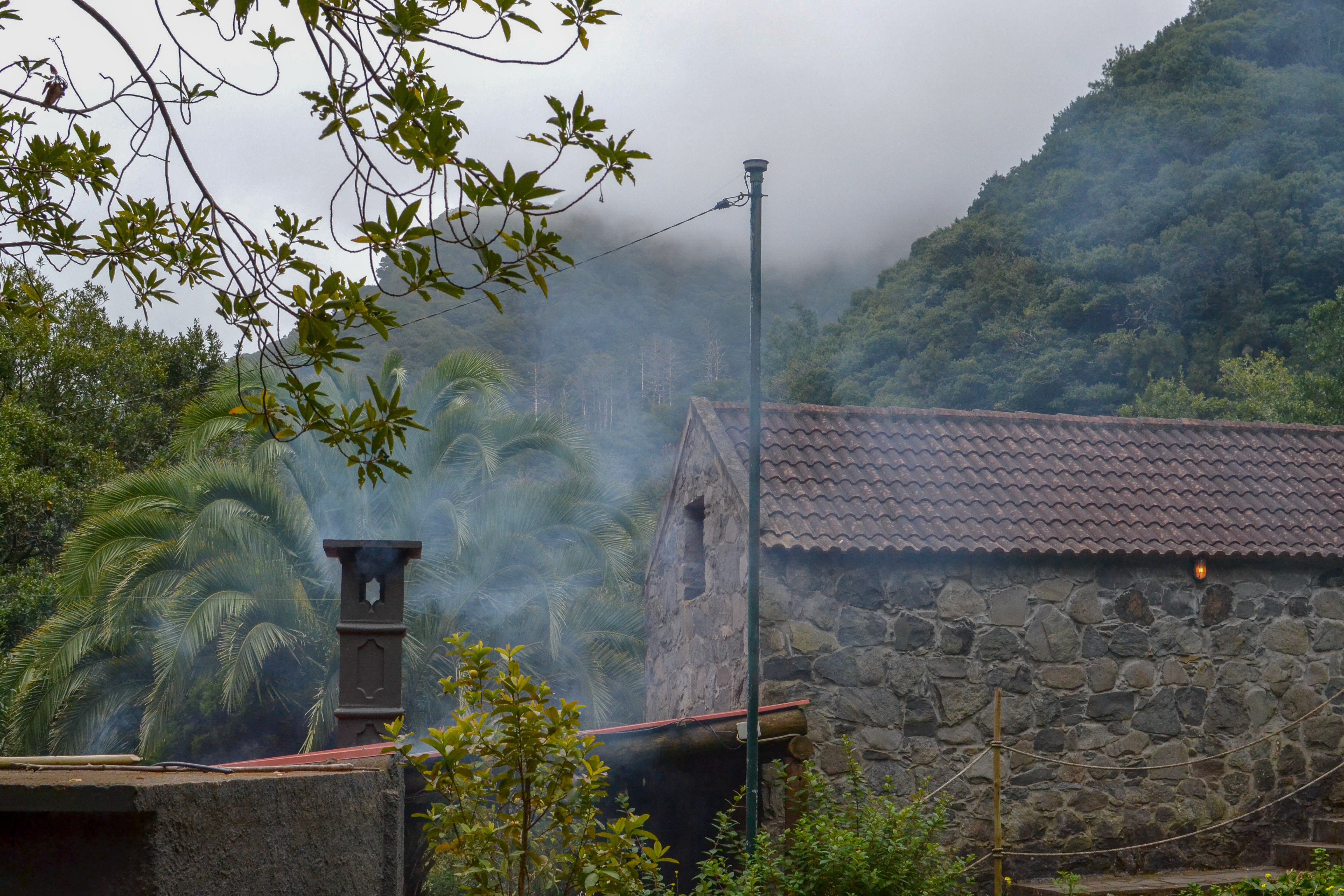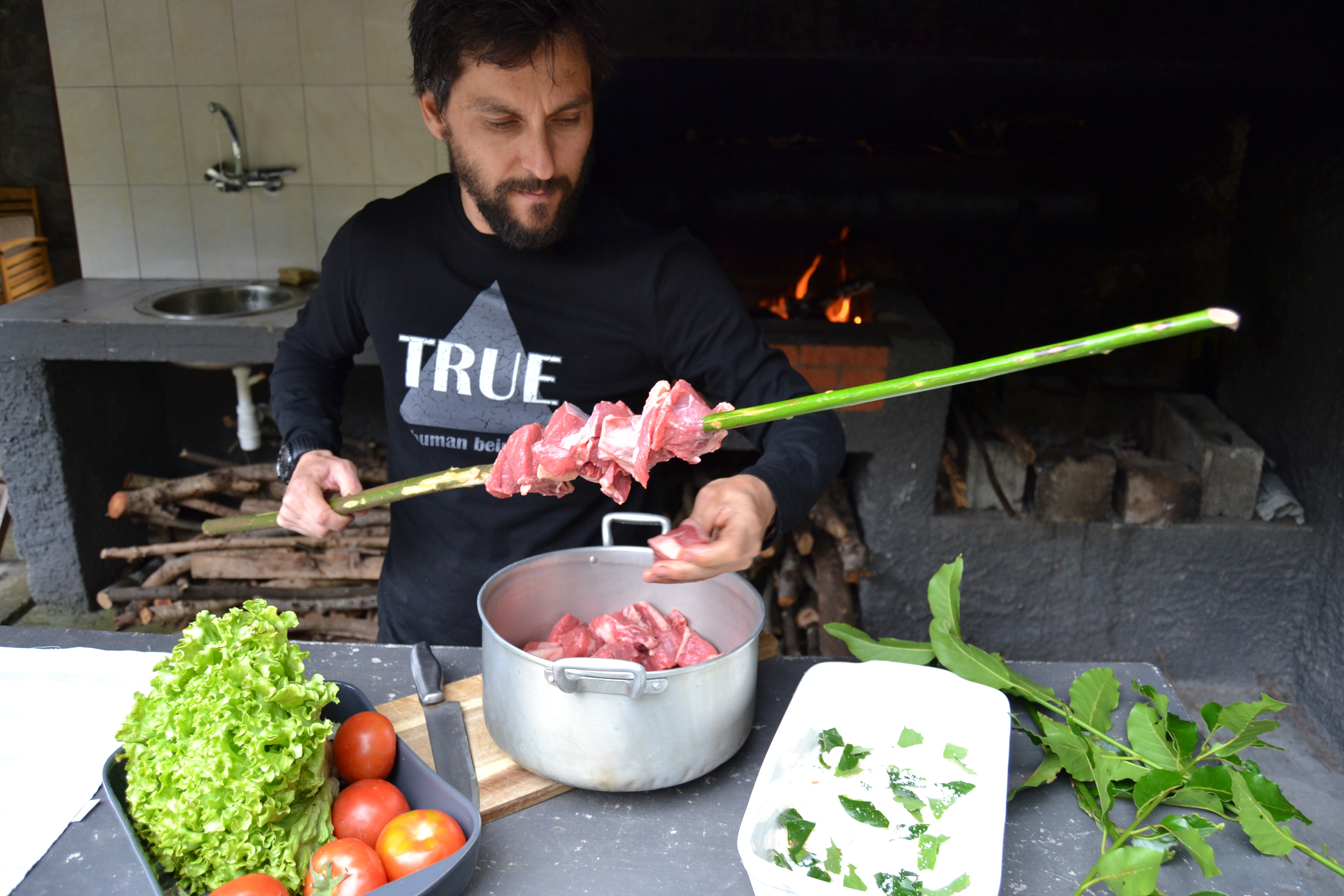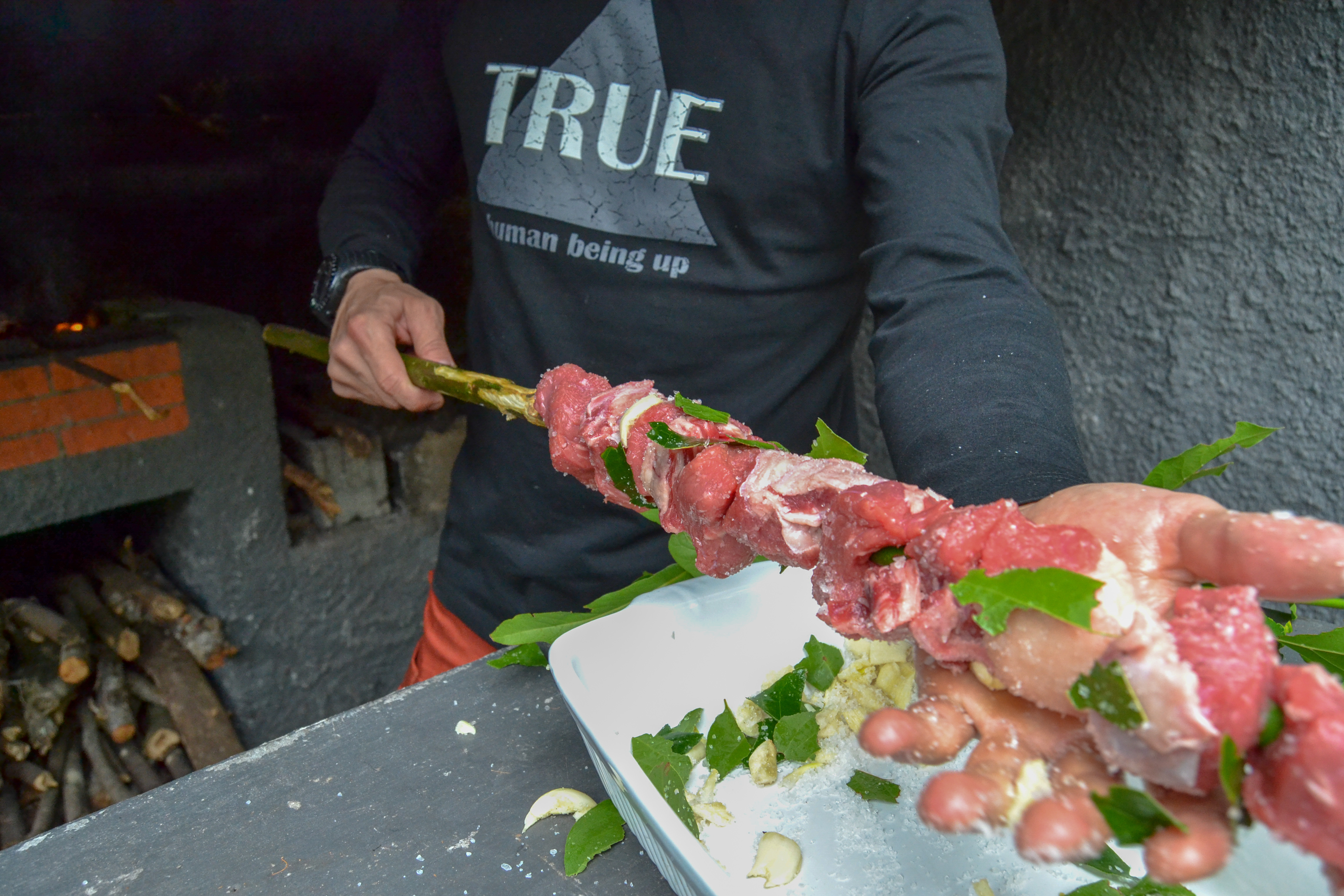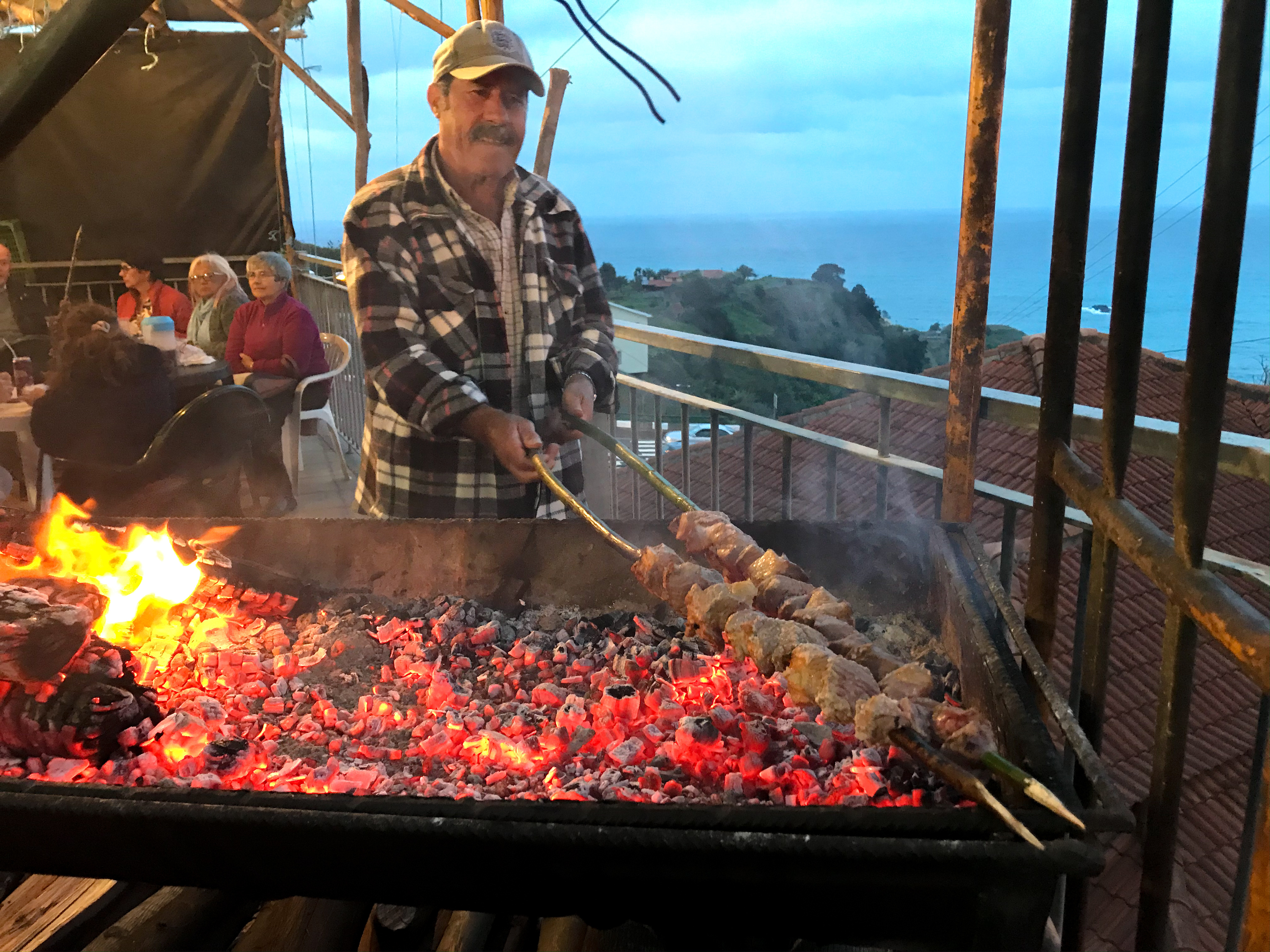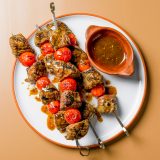With arms as beefy as the hunks of meat that hang on hooks behind him, the butcher stands under a makeshift pavilion, the tarp above rustling in the steady breeze coming off the Atlantic.
I watch as he uses a curved knife to trim well-marbled cubes, judiciously paring away gristle but leaving the fat. He spears the meat onto a 6-foot stick—sharpened, green and aromatic—then hands it to me and directs me toward a long bed of glowing coals. There, another man shrugs and points to indicate that I should season the beef with a salt mixture. As the sun sets, the lush green covering the volcanic cliffs of Madeira’s north coast turns black, and the meat on my branch sizzles.
I’d been told these beef skewers, called espetada, are a featured dish at most any barbecue on this Portuguese island about 600 miles off the coast of Morocco. Still, I’m surprised to find them in tiny Faial at a festival supposedly dedicated to cherimoya, a South American fruit that thrives in a nearby micro-climate. But even at this tiny village party, at least three stands are selling cubes of beef by weight for do-it-yourself grilling. The simplest setup is out front of one guy’s garage: an oil drum sliced in half, the rounded bottom filled with embers, sticks of meat balanced on top.
While I wait, I follow the lead of a helpful septuagenarian, this time English-speaking, who tells me to get a Coral beer and a loaf of sourdough. She then demonstrates for me how to stand the long end of the branch up through the umbrella hole of a plastic patio table, propping the chunks of beef in the air. Using the bread like a glove, I pull the steaming meat off the stick. Juices drip onto my fingers as I bite into crispy bits of fat and succulent, impossibly aromatic beef. It’s almost the best grilled beef I’ve ever had. Almost.
Top honors go to a similar meal I’d had a few days earlier, when I learned that the secret of espetada lies not in the meat, but rather in an ingredient that is revered locally yet in the U.S. isn’t considered an ingredient at all: the skewer itself.
In Madeira, meat is skewered on freshly cut laurel branches, the same type once used to crown athletes in ancient Greece and Rome. The laurel trees (also known as bay) that once blanketed the Mediterranean basin have long been a symbol of achievement, giving rise to the terms “poet laureate” and “baccalaureate.” The oracle of Delphi even was said to have inhaled the smoke of burning bay leaves to aid in her visions.
Today, Europe’s largest remaining laurel forest sits on Madeira, where the branches perfume espetada with their savory scent and bay leaves are crumbled into seasoning salt.
But I am dubious. How could something so often tossed into braises and stews as afterthoughts become a star player? And could a branch really make a difference?
I learn the answers from my guides: Gonçalo Vieira, an environmental scientist with encyclopedic knowledge of the laurel forest, and Roberto Góis, a known grilling master.
When he pulls the charred beef off the grill, the fragrance of bay fills the patio. I grab the meat straight from the stick—incredibly tender, rich with crispy fat, smoky and garlicky.
They pick me up in Funchal, Madeira’s capital on the south coast, and we drive 90 minutes of hairpin turns and dramatic inclines, past terraced farms and vineyards whose grapes end up in the island’s namesake fortified wine. “In Madeira, when you learn to drive, they only teach you four things,” says Góis. “How to go right, left, up and down.”
We ascend through successive bands of micro-climates, at times overwhelmed by the scent of eucalyptus, then pine, then something completely unfamiliar. Along the way, we pull over to sample fruit growing on the side of the road, some of which exemplify the global reach of Portugal’s former empire—citrusy Japanese loquats, star-shaped Suriname cherries, unripe blueberries growing from bushes 12 feet tall. At about 3,000 feet above sea level, we break through the trees and emerge onto a grassy plateau dotted with grazing, free-range cows.
Vieira leads me down a trail into the laurel forest, which grows mostly on the wetter north face of the mountain ridge that divides the island. We walk along a levada, a centuries-old irrigation channel carved into the basalt that funnels spring water to banana and mango farms on the drier south coast. Sunshine sparkles through the leaves of different species of laurel trees crowding the path. Four of the five bay varieties are toxic, but crushed in my hand, they all share the same deep, almost citrusy aroma, so I trust Vieira to pluck the safe ones to bring home.
Góis meets us at the bottom of the trail, and we stop at a restaurant to pick up bolo de caco, a spongy, skillet-baked bread slathered in garlic butter. Chains hang from the ceiling over the center of each table, awaiting skewers of espetada to be dangled in front of diners. We’ll cook nearby at the Nature Inn, a restored stone lodge in the Laurisilva nature reserve.
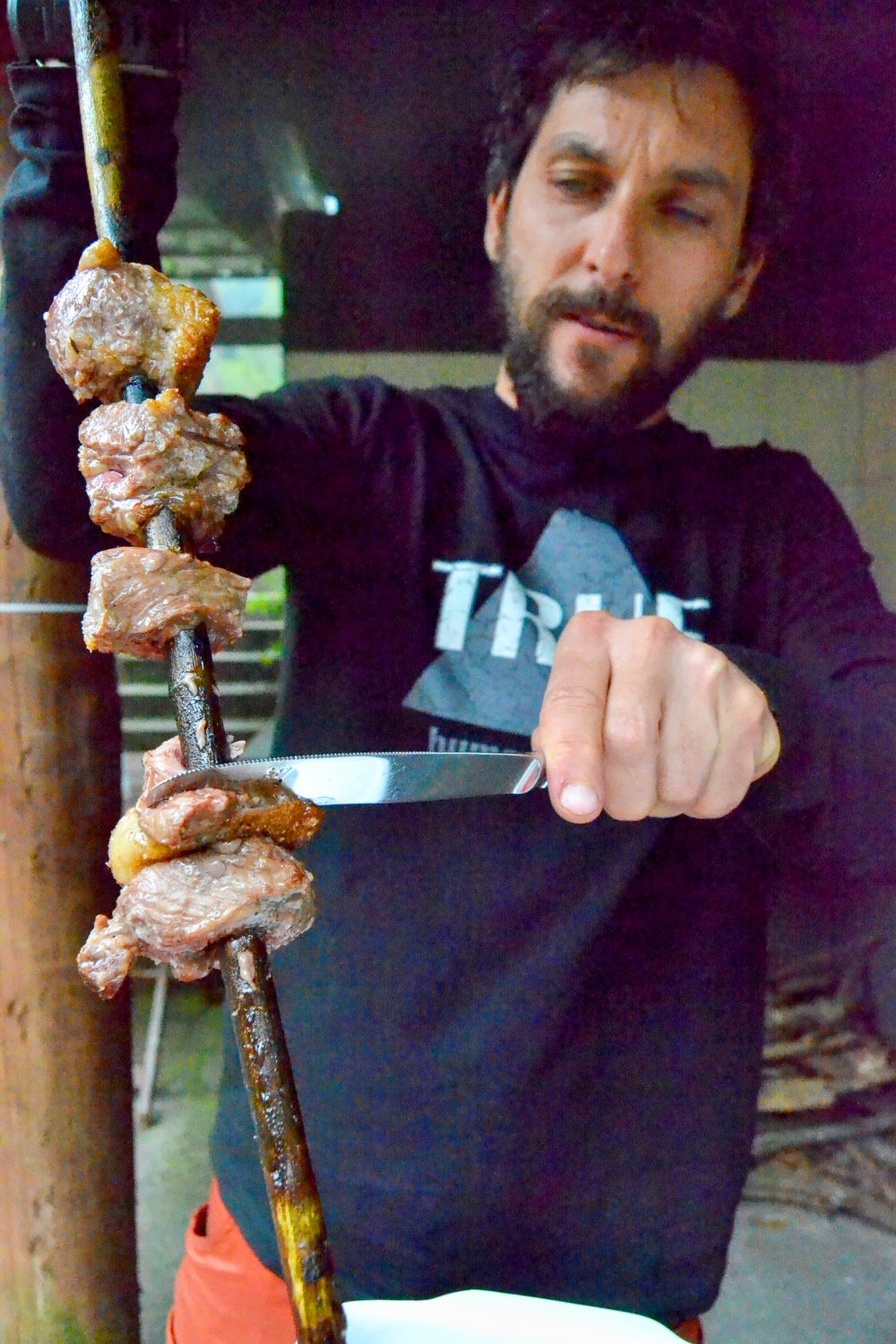
Roberto Góis pulls beef from a spear of laurel.
Góis builds a fire with wood so damp that foamy moisture oozes out of the cut ends, and we walk into the woods to select the right branch. It must still be green, which they say helps transfer the bay flavor, and sturdy enough to hold a couple pounds of meat, yet thin enough to pierce a 3-inch cube without tearing it to shreds. Skeptical, I insist that we also use a dried, previously used branch for a side-by-side test.
The leaves are stripped off the fresh branch and tossed on the fire. Aromatic smoke fills the air with a crackle and hiss. More leaves are crumbled into a casserole dish whose bottom is covered in coarse salt. Góis peels an entire head of garlic, breaking up the cloves with his fingers, then mixes everything with his hands.
Once the fire burns down, he spears chunks of beef onto the stick, with each piece well spaced to promote overall browning. Taking a handful of the garlic-bay salt, he rubs it onto the beef, ensuring the garlic and bay make contact with every surface, especially the fatty edges. “They call that the flower of the espetada,” Góis says, pointing out the fat with a salt-covered finger. “For me, I like to wait for the fatty ones. The meat, if it’s healthier, it tastes worse.”
The meat is briefly cooked all around, then Góis shakes off the excess salt with a whack. He leans the skewers against each other with each turn so the irregularly shaped branches don’t roll away.
When he pulls the charred beef off the grill, a powerful fragrance of bay fills the patio. I take a piece of bread and grab the meat straight from the stick—incredibly tender, rich with crispy fat, smoky, garlicky. “In a restaurant it’s good,” says Vieira, “but it’s not like this.”
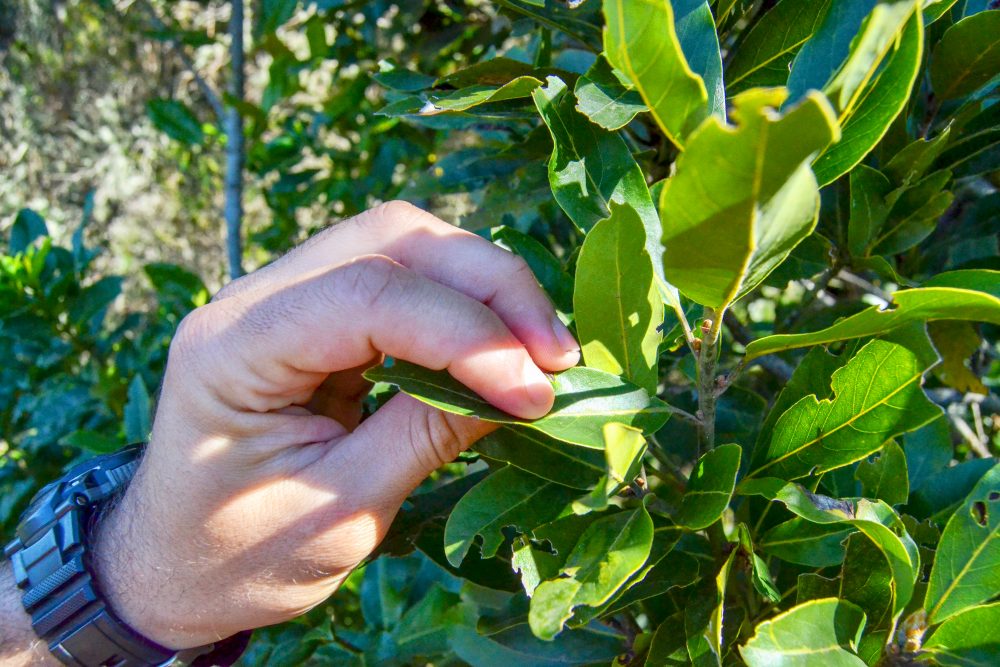
Sure enough, the fresh branch conveys more bay flavor, but I’d have called even the beef on the dry stick some of the best I’d ever eaten. It’s even more fragrant than what I would eat at the festival because Góis uses more bay and rubs the leaves directly onto the meat with the salt. And that gives me hope that even without fresh laurel branches, we can replicate the flavor back at Milk Street.
For our recipe, we took a cue from Góis and made a compound salt, but upped it to 10 dried bay leaves pulverized with salt in a spice grinder. Several attempts at maximizing the bay flavor in the salt—toasting it for a simple dry rub, dissolving it in water and marinating the beef, blooming the bay salt in oil—ultimately fell short on their own. But combining methods into a two-step seasoning process did the trick
First, some of the bay salt was mixed with olive oil and mashed garlic, which we then rubbed into the meat. That alone boldly seasoned the surface of the beef and was delicious. But we wanted even more bay flavor, so we looked at the science and turned to another ingredient from the island, Madeira wine. Simmering the fortified wine with the remaining seasoned salt pulled out alcohol-soluble flavor compounds in the bay, amplifying it enough to create a simple sauce that evoked the essence of the fresh laurel branch.
The resulting beef, doused in the slightly sweet, garlicky sauce, was spectacular. Loaded with bay aromas, it even was in the running for the best beef ever.
More From Madeira
